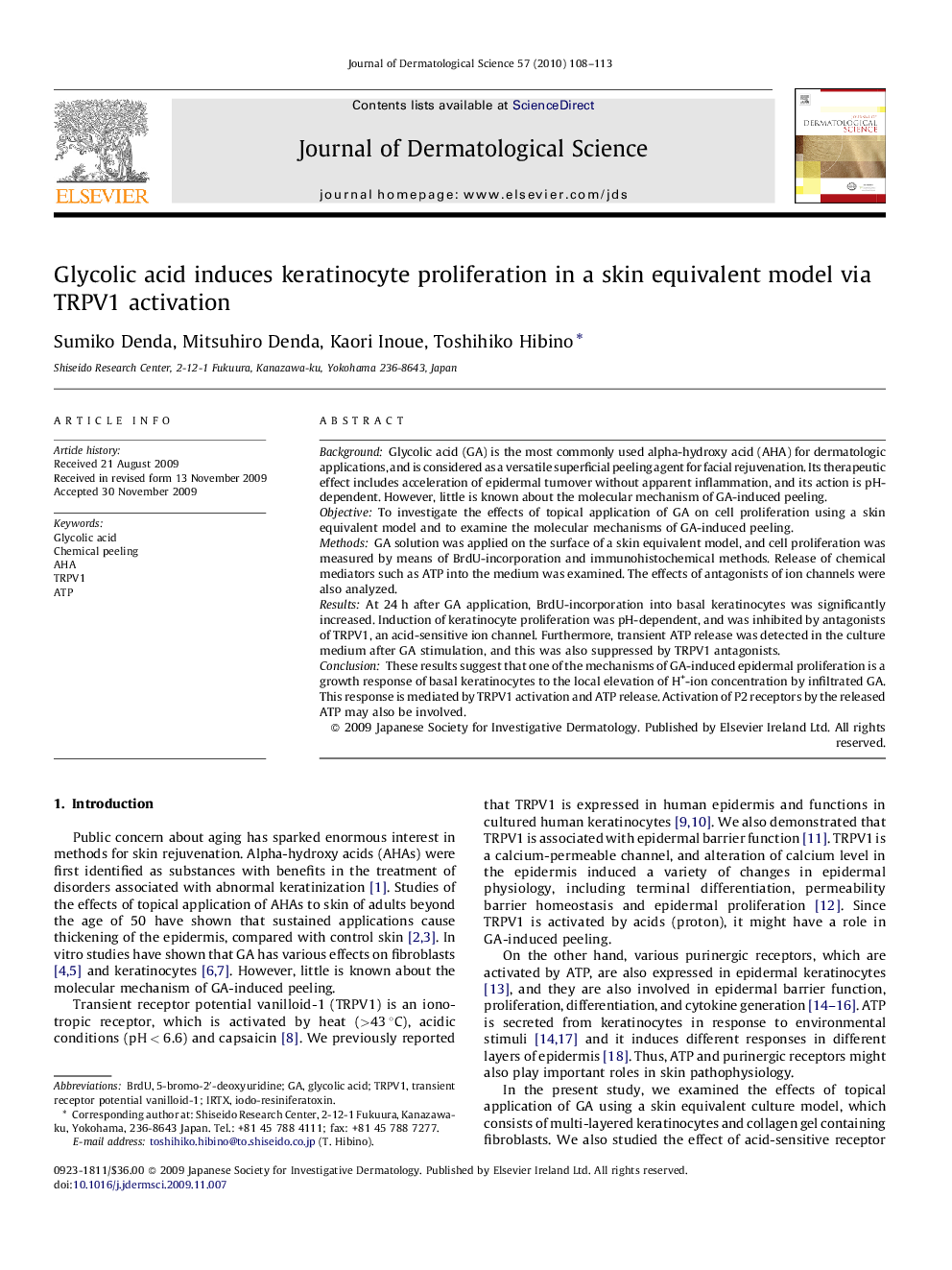| Article ID | Journal | Published Year | Pages | File Type |
|---|---|---|---|---|
| 3213802 | Journal of Dermatological Science | 2010 | 6 Pages |
BackgroundGlycolic acid (GA) is the most commonly used alpha-hydroxy acid (AHA) for dermatologic applications, and is considered as a versatile superficial peeling agent for facial rejuvenation. Its therapeutic effect includes acceleration of epidermal turnover without apparent inflammation, and its action is pH-dependent. However, little is known about the molecular mechanism of GA-induced peeling.ObjectiveTo investigate the effects of topical application of GA on cell proliferation using a skin equivalent model and to examine the molecular mechanisms of GA-induced peeling.MethodsGA solution was applied on the surface of a skin equivalent model, and cell proliferation was measured by means of BrdU-incorporation and immunohistochemical methods. Release of chemical mediators such as ATP into the medium was examined. The effects of antagonists of ion channels were also analyzed.ResultsAt 24 h after GA application, BrdU-incorporation into basal keratinocytes was significantly increased. Induction of keratinocyte proliferation was pH-dependent, and was inhibited by antagonists of TRPV1, an acid-sensitive ion channel. Furthermore, transient ATP release was detected in the culture medium after GA stimulation, and this was also suppressed by TRPV1 antagonists.ConclusionThese results suggest that one of the mechanisms of GA-induced epidermal proliferation is a growth response of basal keratinocytes to the local elevation of H+-ion concentration by infiltrated GA. This response is mediated by TRPV1 activation and ATP release. Activation of P2 receptors by the released ATP may also be involved.
